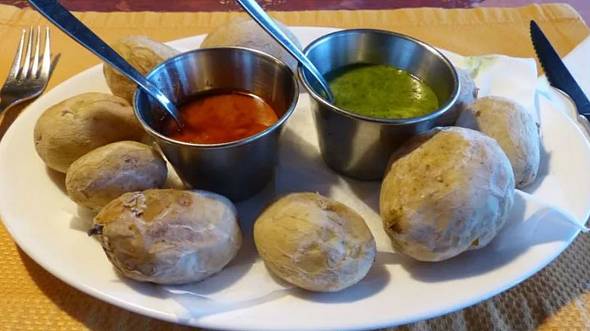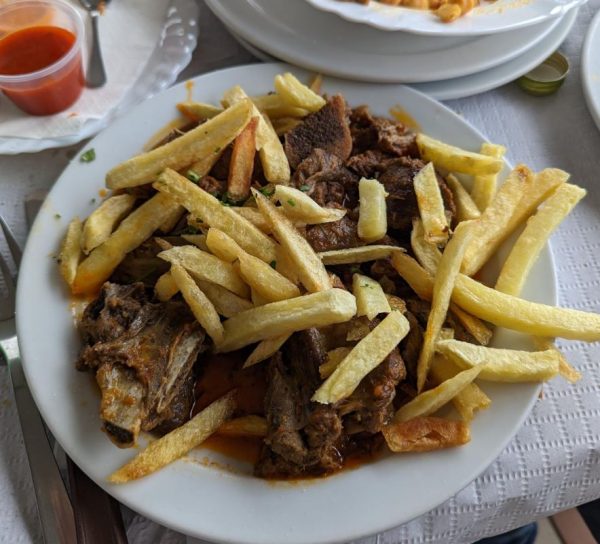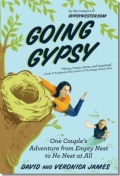
We have a lot of reasons for traveling, but I think the main one is curiosity. We have both always been the kind of people that want to know what’s over the next hill, around the next bend, or across the sea. So we love to set out on new adventures to explore different destinations, cultures, landmarks, and landscapes.
And for us a big part of what pushes us forward is the desire to try new and unique cuisine. We have tried silkworms in China, crickets in Mexico, donkey in Sardinia, and fat balls in Michigan. I guess you could call that an eclectic and unsettling mix, but actually all of those were pretty tasty, with one huge exception; we will never, ever eat a silk worm again.
The point is, even foods that sound strange can be very good, that’s why we are always game to try new ones. So as we have been making plans to visit the Canary Islands, we decided to take a look at some of their popular dishes. But first we need to find a Hotel in Puerto Rico, Gran Canaria. Just our luck, Marina Suites looks just about perfect.
Their rooms are set up more like an apartment than a regular hotel so we are sure to feel right at home. And with an infinity pool, pilates, a Virtual Cycling Room, yoga, Kids Club, and a ton of other activities we are certain to be able to build up an appetite. Speaking of that, let’s get back to the food.
The first thing we learned is that we can’t begin to talk about Canarian cuisine without discussing gofio and mojos. Gofio is a flour made from toasted, ground wheat and / or corn and has been a big part of the islander’s diet since ancient times. This versatile and nutritious food can be consumed in several ways, everything from drinking it with milk, to making a dough called pella, to cooking it in soups and stews.

Mojo is a sauce made with oil and vinegar, garlic, salt, and a variety of spices and peppers depending on whether it is green mojo or red. The green gets its color from green peppers and coriander or parsley and is usually served with fish, while the red comes from palmero peppers and paprika and is generally served with meats. We hear that both are excellent with potatoes.
As with many traditional dishes around the world, several Canarian specialties come from making the most out of available ingredients during times of economic hardship. Over the years they became staples and a part of the culture. Ropa Vieja is a good example.
The name means old clothes, made with pork, chicken, chickpeas, and potatoes, the end result is a hash that is said to look like old rags. There is even a legend about a poor man with no money who gathered up some rags and sold them to to buy meat to make this stew. We doubt that is really how it got the name, but we are most certainly ready to try on some old clothes.
Other stews include rancho canario, with pork, potatoes, and noodles; or the meat heavy puchero canario, with pretty much all of the meats including beef, pork, chicken, sausage, and of course, bacon. Soups, such as caldo de papas or potato soup, fish soup known as caldo de pescado, and Potaje de berros, often called watercress soup but has tons of vegetables are also very popular.
Rabbit in salmorejo and carne fiesta are two more local favorites that we wouldn’t want to miss. Veronica is a big fan of rabbit, and salmorejo sounds especially delicious as a marinade of white wine, olive oil, garlic, and spices to season the meat. It is often served with papas arrugadas, or wrinkled potatoes in English, which are small potatoes boiled in salt water and perhaps the most famous side dish in the Canary Islands.
Carne fiesta might be more up my alley since the name means meat party. I mean, what’s not to like about that? The name actually comes from the tradition of making it for festivals and parties, and I can see why. Marinated, fried pork and french fries… yes please.

For a distinctive, innovative approach to many of these traditional ingredients we will also certainly want to try El Puerto Restaurant at Marina Suites. As one of the top-rated restaurants in the area we could hardly pass up sampling their unique creations that combine authentic Canarian cuisine with a dash of international style.
Wow! All of this is sure making us hungry…
Let’s eat!
David & Veronica, GypsyNester.com



Excellent breakdown.
Fantastic piece of writing about this place.